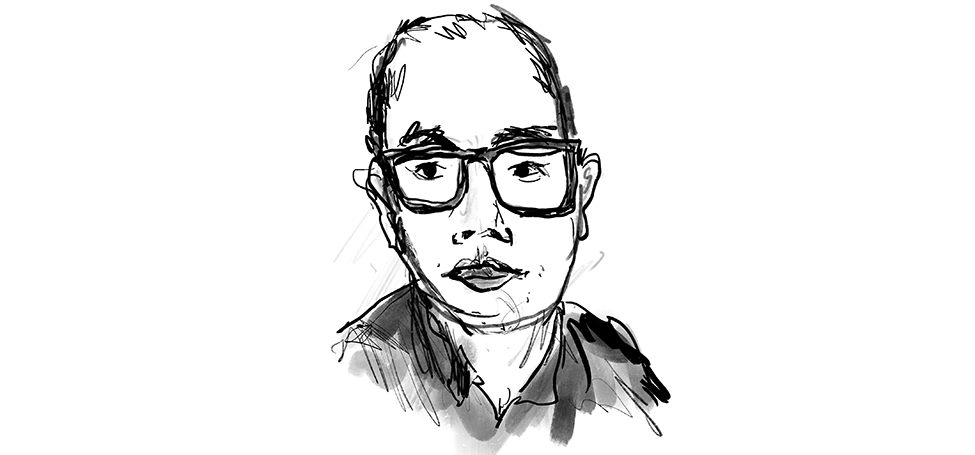
I Think, Therefore I Draw
As a young copywriter working at a New York City ad agency, Ken Krimstein ’80 had a routine. Each Wednesday he would walk around the corner to the offices of The New Yorker, drop off a batch of his cartoons, and hope that the editor would like one enough to publish it. Ten years and 400 cartoons later, his first one was accepted by the magazine.
“In those days and even now, that’s what it took to get in,” says Krimstein, a longtime ad agency copywriter and creative director who’s since had more than 30 of his cartoons appear in the magazine, as well as in several New Yorker anthologies. At the time, however, “I could have wallpapered my bathroom with the rejection slips. But I had this incredible desire and belief that my work should be in there and I knew this was part of the process. Of course the minute I got the OK, I called everyone — and it didn’t run for another year.”
The son of an art director, Krimstein grew up in a home packed with art supplies. And like lots of kids, he loved cartoons, from “Peanuts” to “Archie” to the stuff that ran in the National Lampoon and The New Yorker.
“I really love the combination of words and pictures,” he says. “In cartooning it’s one plus one equals three. You have something that’s more than the sum of the parts; and even without words, the picture should convey an idea.”
He drew for his high school newspaper in suburban Chicago; once he arrived at Grinnell, he wrote features — “weird and strange human interest stories” — and drew cartoons for the Scarlet & Black. “I’d come in the day they were putting the paper to bed and see what was in the news – registration or graduation, for example. Then I’d improvise on the spot. The nice thing about cartooning is all you need is a blank piece of paper and a felt-tip pen.”
A history major who also focused on English and philosophy, Krimstein doodled in class and spent hours drawing in the Forum. It was his First-Year Tutorial, “Plato’s Republic … and Ours,” along with a lifelong thirst for learning, that culminated in a recent obsession with philosophy and his first graphic novel, The Three Escapes of Hannah Arendt (Bloomsbury, September 2018). The book’s structure was inspired by a copy of Aristotle’s Poetics (translated by Grinnell professors H.G. Apostle, Elizabeth Dobbs, and Morris Parslow) that Krimstein bought in Grinnell’s Pioneer Bookshop during his last reunion.
After several decades in New York City, Krimstein now teaches at DePaul University and The School of the Art Institute of Chicago, where he shares his knowledge of design, writing, strategy, and storytelling with students. He’s also begun work on his next graphic novel. “I was visiting Grinnell and having coffee at Saints Rest with (Professor) Harold Kasimow, and we talked about the recent discovery in Lithuania of pre-World War II autobiographies of teenagers.” Like his Arendt novel, he’ll take their words and add pictures to describe the emotions of that place and time.
When asked which of his cartoons is his favorite, Krimstein pauses. “I love them all, even the ones that haven’t sold,” he says. “One of my first cartoons that was published and that I really liked ran in The Wall Street Journal. It showed a statue in a park of a very pompous guy and it said, ‘Statesman, Scholar, Bore.’
“You always have that little twist in cartoons. I love the fact you can be a little subversive and tell the truth in a way you can’t in real life.”
